Last updated: January 6th, 2023
Starting to use a bicycle for practical purposes can be more overwhelming than you’d think.
After all, few of us are fortunate enough to grow up in cities like Amsterdam or Copenhagen, where great infrastructure and high density make cycling the norm.

In most of the rest of the world—I’m in the US, but this applies broadly—the best way to build cycling into your daily life isn’t so obvious.
As prospective bike commuters, it’s usually our first time tackling concerns like, “What do I wear? How do I pick a route? Can I carry stuff? Is it actually safe?”
I’ve answered those at length elsewhere, and will share some links at the bottom of the page.
For now, we’ll tackle the even more obvious and pressing question of what makes for the right bike in the first place.
In no particular order, here’s how to choose an urban/commuter bicycle:
- Comfortable riding in casual clothes
- Steady and stable handling
- Good wheel build quality and sealed bearings
- If possible, an easily-adjusted quill stem
- It weighs what it weighs
- Fenders for year-round use
- A good system for carrying things
- A protected chain
- Great lighting
- The right contact points: grips, pedals, and saddle
- Try to save by buying in autumn
Bicycles comprise a $6 billion market in the US alone, but demand is overwhelmingly on the sport and recreational side. Naturally, most bike shops mirror these preferences.
That’s fine…but it’s not very practical for most commuters.
For first-time bike commuters or urban cyclists, it can be confusing.
After cycling everywhere for years straight, and spending plenty (just ask my wife!) on trial and error, I’ve learned some things that may not be obvious.
Before plunking down your cash for a shiny new bike or a Craigslist crapshoot, here are my top tips to start out right.
Some cost little or nothing, and some cost a fair amount, but the common theme is good ol’ utility for the practical cyclist.
(Looking for specific recommendations? Check out my round-up of the best value city bikes for some detailed examples.)
This article might contain affiliate links. As a member of programs including Amazon Associates, I earn from qualifying purchases.
It must be comfy in normal clothes
If I could boil the choice of city and commuter bikes down to one litmus test, it’s this:
“Can I comfortably ride it in my normal clothes?”
That means different things to different people, of course, but the point is that cycling won’t really become part of daily life if you can’t simply hop on and go.
And a big obstacle for many new riders is the belief that you just can’t ride comfortably without head-to-toe neon Lycra and an aerodynamic helmet.
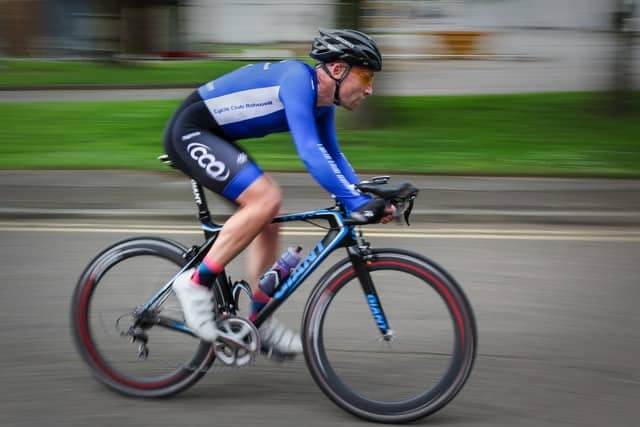
While that’s true (if slightly exaggerated) on more aggressive, racing-style bikes, a utilitarian bicycle doesn’t require special wardrobes any more than a Prius requires a Formula One outfit.
You can always opt for athletic wear (normal gym clothes are fine) if your long and strenuous trip demands it. For grocery store runs and the like, you’ll be glad that jumping on in chinos or a skirt is no problem.
A big part of comfortable riding comes down to being upright.
However, just like you can’t lift a race car and call it a utility van, it’s not as simple as taking a standard road bike and raising the handlebars a few inches.
Technical challenges aside, the geometry of sportier bikes is optimized for forward-leaning posture. That doesn’t translate well to upright, utilitarian use.
There’s no harm in trying, but after a few minutes on a racing-style bike followed by a jaunt on something like the below, the differences will be crystal-clear.

“Boring” handling is best
You might have noticed that road bike reviews often talk about “lively handling” and “aggressive geometry” with “jackrabbit acceleration” and so forth.
That’s all well and good if you’re trying to set a record, but for practical purposes, it all translates to “twitchy.”
Clear your mind of all the racing-oriented descriptions of what makes for a good bike. Instead, you’ll want something that feels neutral, steady, confidence-inspiring…in a word, boring.
Uninspiring? Perhaps. But you’ll quickly find that squeezing between vehicles while carrying a load in pouring rain is not the time for “lively” handling.
Serious bike nerds have endless numbers and charts and jargon for bicycle geometry. This analytical rigor mixes with something I can only liken to astrology to form arcane theories of bicycle handling.
But this guide is specifically not for serious bike nerds, so we won’t go down the rabbit hole of geometry charts.
Instead—and since I’m fond of litmus tests—here’s what to consider: “When I ride this bike, can I fully watch my surroundings, and roll over bumps and cracks, without thinking about the bike itself?”
If so, you might have found a winner.
(Some) details matter
Target and Trek alike can create a bike with the same geometry and measurements. However, dirt-cheap offerings usually lack attention to detail in a few key areas.
I’d focus on three in particular.
First, wheel build quality is the most important thing that new cyclists wouldn’t think of. Think about it: wheels bear the brunt of every impact, yet they’re strung together by spokes just a few millimeters wide. They’re impressively strong when done well, but mass-produced bicycle wheels are almost never well-built out of the box.
The naked eye can’t tell. Price is no guarantee, either, since machine-built wheels predominate even on bikes costing thousands.
However, buying from a local shop (or visiting one immediately) gives an experienced mechanic the chance to finesse the factory wheels into a durable state.
Better still, many shops offer something like one year of free tune-ups on bikes they sell. This is valuable because even perfectly-built wheels need adjustment—known as “truing”—as spokes stretch with use. The same goes for shifter and brake cables, too, since metal generally stretches under tension.
Second, look for fully sealed bearings in the hubs and bottom bracket, at a minimum, and in the headset if possible. This reduces maintenance especially in wet climates or grimy conditions. Fortunately, most city bikes above rock-bottom prices do have these. If you’re unsure what these terms mean, then the specs page (or shop staff) can help.
Third, you’ll see below that some accessories are very important, and perhaps downright essential. If your stock bike includes the most important accessories, then you’ll probably save money over starting with an otherwise similar but unadorned bike.
A quill stem makes life easier
This is a slightly unusual suggestion, but bear with me.
There are basically two types of bicycle stems. One is a threadless stem, which looks like this and fits around the fork’s steerer tube.
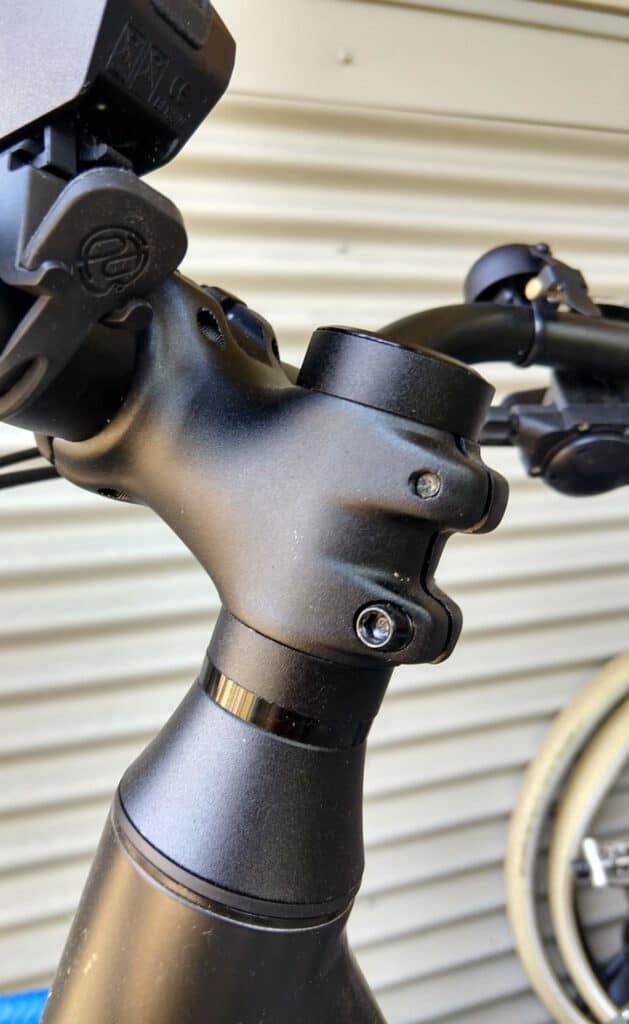
The other is a quill stem, which fits inside the fork’s steerer tube, and looks like this.
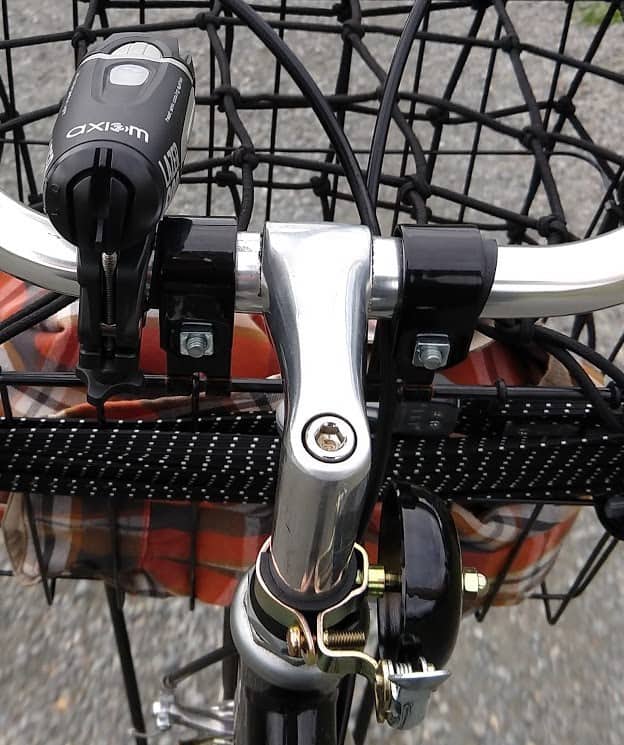
Threadless stems usually have minimal room for adjustment up or down. The factory usually cuts the steerer tube to avoid excess, which looks clean, but reduces adjustment to practically nothing (without replacing the entire stem).
On the other hand, since a quill stem fits inside the steerer, it usually has more room for adjustment. Better yet, it’s adjusted with only a single bolt, and is easier to fasten when you’re finished.
So what?
If the stock handlebar position is perfect, then it really doesn’t matter.
But in reality, two people of the same height and proportion might be comfortable with different riding postures. Your own preferences will change over time, too.
Fine-tuning your handlebar height quickly and independently is a little thing, but can make a big difference in your enjoyment of everyday cycling.
Heavy bike: who cares?
There are three reasons why bicycle weight is practically irrelevant to your average commuter or grocery-getter.
First, once you’re in motion, the weight is almost imperceptible. If you can lift the bike up your stairs, onto a bus’s bike rack, and the like, then it’s light enough.
Second, there’s a saying in cycling (and other activities): “Light, cheap, and strong. Pick two.” That one is pretty much self-explanatory. When you consider the potholes and knocking against bike racks and other wear that a city or commuter bike must withstand for years…it’s easy to see why cutting weight gets very difficult and expensive.
Third, all the parts and accessories that make a bike truly useful also add several pounds, but increase a bike’s utility tenfold. And with the additional weight of your commuting load or store purchases, a few pounds of unadorned bicycle weight aren’t even noticeable.
Fenders are worth their weight in gold
It’s telling that most North American retailers sell fenders as “accessories.”
That makes sense for a more sport-oriented ride. For a truly practical bike, however, fenders are just about mandatory.
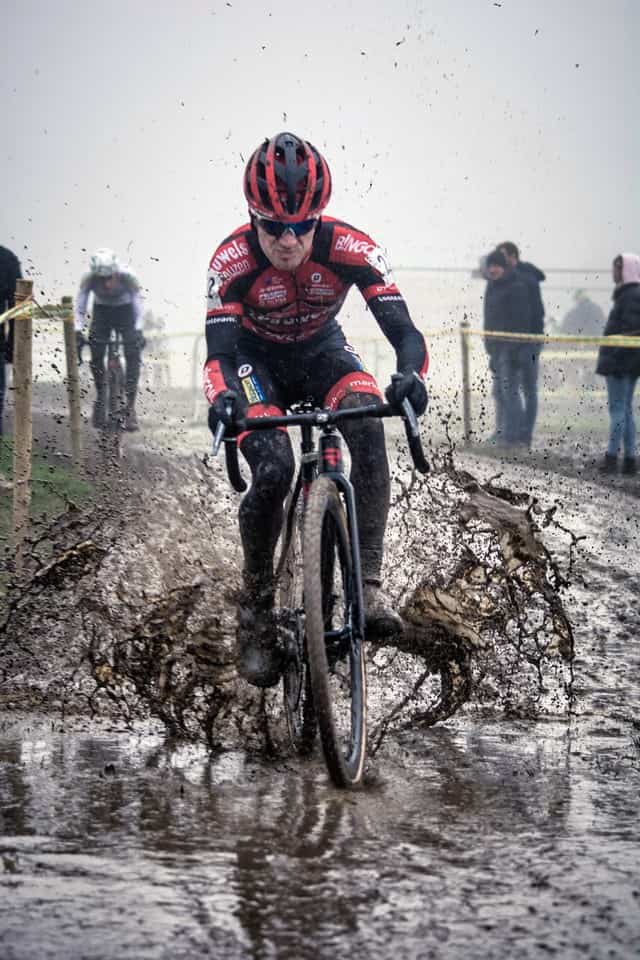
The need is obvious in a damp climate. Otherwise, here in my own Pacific Northwest, I’d be lucky to bike-commute a few dozen times a year! Even in bone-dry climates, there are still ditches and drains and random run-off that can leave a dirty stripe right up your back.
The goal is to ride in work or street clothes, so let’s keep them presentable!
Fortunately, several city bikes have entered the market in the last five or ten years, and most of them have nicely color-matched fenders right out of the box. If not, then budget about $50 for a set, plus anywhere from free (with a bike purchase) to about $30 for installation.
Racks or bags or…both?
A backpack is a cheap way to test the waters of utilitarian cycling.
However, riding without weight on your shoulders is vastly more comfortable and less sweaty.
Many sport-oriented bikes do not have adequate (or any) rack mounts, since their target market just wouldn’t use them. There are usually workarounds, but those bikes won’t necessarily handle well with more than a couple pounds of baggage anyhow.
When it comes to choosing your first city or commuter bike, check the specs (or ask the staff) for front and rear rack mounts. Rear is usually best, since it affects handling much less, but you may end up wanting both.
Racks themselves have little surface area, so how do you actually carry things?
There are two common ways.
A pannier (pronounced “PAN-yer”) is the sleekest option and probably the most convenient solution for laptop-toting commuters. (Spoiler: this is the best choice for everyday loads.)
It’s usually a roll-top bag that clips onto the side of a rear rack. Good ones will be waterproof, reasonably comfortable to carry over your shoulder, and very easy to attach and remove. Many even have a lifetime warranty.
The other option is a good ol’ basket.
The classic, American-made Wald baskets come in several sizes and shapes, all at great prices. They do raise the center of gravity more than a rack-and-pannier combo, and may feel less solid. Still, they’re downright cheap, and often a good choice for light front loads (beer run, anyone?) in addition to a rear rack.
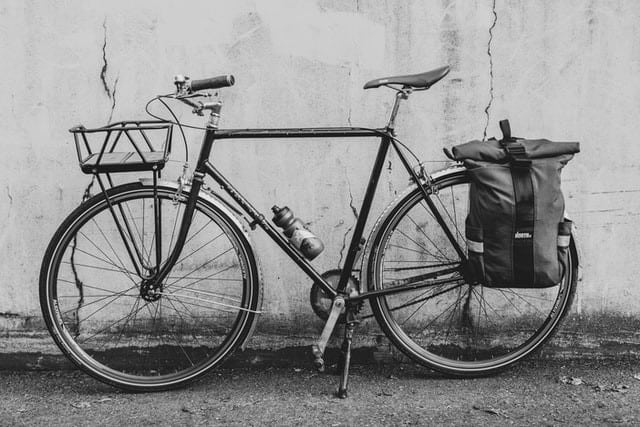
Pro tip: put an elastic net (like this one) over the top, and you’ll have no problem keeping groceries or other small goods in place.
Cover your chain for clean pants year-round
All right, you’ve got a comfortable bike with fenders to keep the crud off your back, and a rack to carry your essentials, so you’re all set, right?
Almost.
An oft-neglected part of everyday cycling is dealing with greasy chains. Nobody wants nasty black smudges around their right ankle, so it’s worth adding a chain guard—or, better yet, buying a bike that includes one.
The most common sort covers just the top of the chain. It’s adequate, and easy to find.
The better option is a full chain case. It not only guards your pants from gunk, but also keeps the chain clean of debris and the elements. These are unfortunately rare on stock bikes outside Europe, but a couple of aftermarket ones are readily available—if not the most attractive.
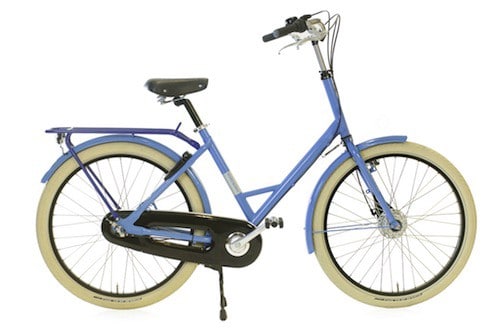
Note that some chain guards require removing the right crank arm to install. While it’s not hard, it does require a couple of special tools, so I recommend asking a shop to take care of it.
By the way, chain guards can still get dirty, just like the pedals and frame do. It’s still easier to remove dirt than grease from your clothes, but nothing on a bicycle ridden year-round will remain squeaky-clean on its own.
Lights are important, all the time
Bicycle lighting serves two purposes: seeing and being seen. That makes them a no-brainer at night, but still important during daylight hours.
European city bikes, especially in the central and northern parts of the continent, take a very practical approach. They typically have something called a dynamo, which is basically a generator inside the front hub. It turns motion into electricity which powers front and rear lights. That means no recharging, ever!
Better yet, these lights only need to accommodate one orientation and position, so they cast a nicely squared-off beam like a car headlight. This makes for more even lighting at night and creates less glare for oncoming riders.
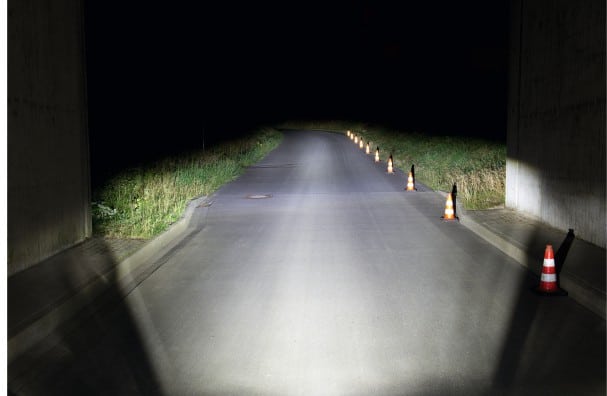
You won’t regret dynamo lighting if your budget permits. Unfortunately, it’s just not common in North America, where sport, not transportation, drives the mainstream cycling market. (However, a few large brands like Breezer are starting, as it were, to see the light.)
If you go that route, you’ll need to work out a few technicalities. We’re not talking rocket science, but it’s worth reading this terrific technical guide before you start shopping.
The more flexible option is a set of detachable, USB-rechargeable lights.
You can spend a staggering amount, but rarely need to exceed $100 for the pair. Anything a local bike shop recommends is likely to be decent, at the very least.
Given how much lighting affects your safety and enjoyment, consider browsing the incredible Bike Light Database (no affiliation) for more information.
By the way, more lumens isn’t always better. It’s how they hit the ground that matters.
Distributing the light evenly—to reduce the blinding center and dim edges—is no easy task. That’s why optical design, not just sheer power, is a large part of headlight pricing in particular. If you see a (claimed) 1500-lumen model on Amazon for the price of a 400-lumen brand-name light, I can almost promise the latter will serve you better.
Detachable lights will never cast as broad or even a beam as dynamo lights. The former have to accommodate all sorts of orientations and positions, so their beams are necessarily round, not squared-off. (The clever Pathfinder headlight, from Portland Design Works, may be the only one that gets close.)
As for using the lights: flashing modes are fine during the day, but steady beams illuminate better for riding after dark. Avoid a flashing setting at night, since it’s more disorienting to others than you might expect, and also harder to gauge distance from.
Avoid strobe settings, period, due to severe disorientation and even seizure risk to others.
That said, restrained blinking does get attention in busy, bright intersections. Consider throwing on a pair of inexpensive (e.g., $15) flashers front and rear to complement—never to replace—the steady beams of your main lights.
Get the “contact points” right
Few parts of a bike seem more boring than the grips, pedals, or saddle.
The truth is that these “contact points” have an outsize impact on your comfort. Choosing the best grips, appropriate flat pedals, and a proper saddle can make all the difference in the world.
I won’t even try to recommend specific ones, since your size and build, riding posture, and weather conditions make a huge difference.
But, broadly speaking, most people who try these three things end up loving them.
Number one is ergonomic lock-on grips.
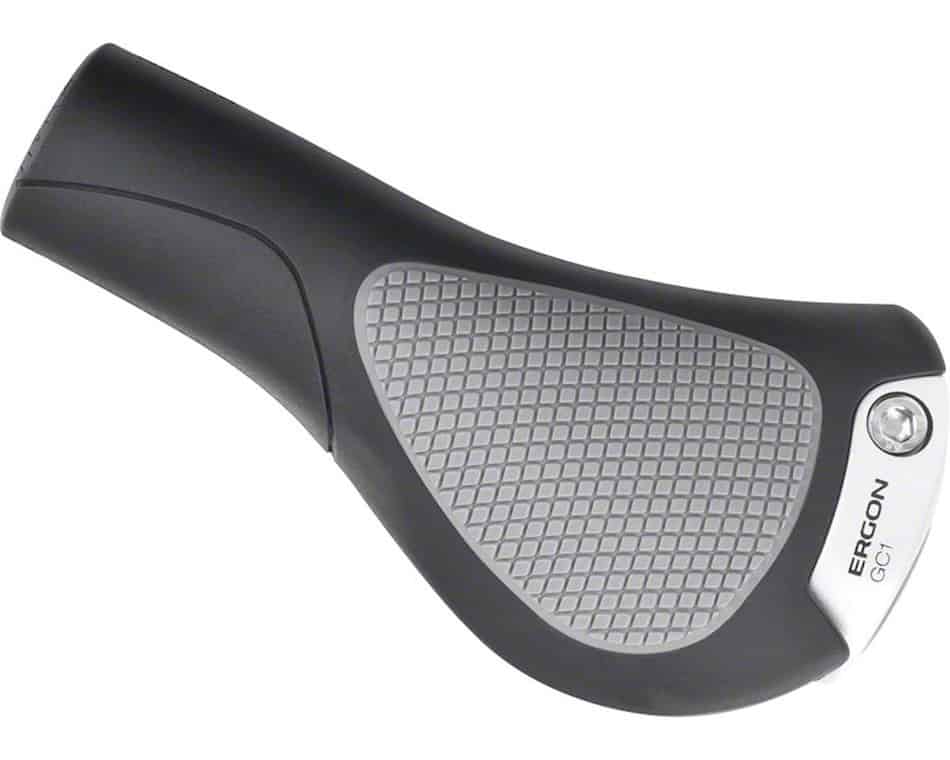
“Ergonomic” refers to the shape, which mimics the contour of your hands to minimize pressure points. “Lock-on” refers to the small hex bolt that clamps onto the handlebars to prevent them from rotating out of position as you ride.
Number two is flat pedals with a surface like sandpaper (or, more accurately, skateboard grip tape).
To the earlier point about riding in everyday clothes, it needs to be easy to ride in whatever shoes you’re wearing.
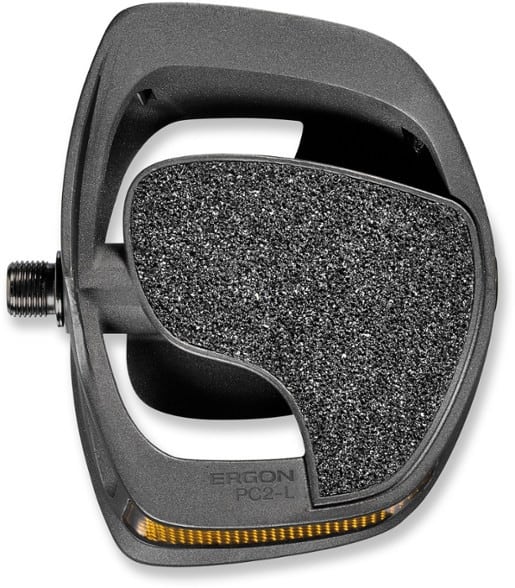
I find that the grip-tape surface gives better traction than rubber inserts and more comfort under thin soles than a metal cage-style pedal. Traction in significant mud or snow might demand BMX-style pedals with small spikes, but they’re overkill for most use—and a bit hard on leather soles.
Finally, it’s very tempting but unwise to pick the plushest saddle you can find.
Yes, they’re initially comfortable. But on rides of more than just a few miles, their softness tends to envelope nerves and tendons, which actually increases perceived pressure. Your experience may vary here, but there’s a reason every long-distance cycling you’ll ever meet uses a firm saddle (often a leather one) even without padded shorts.
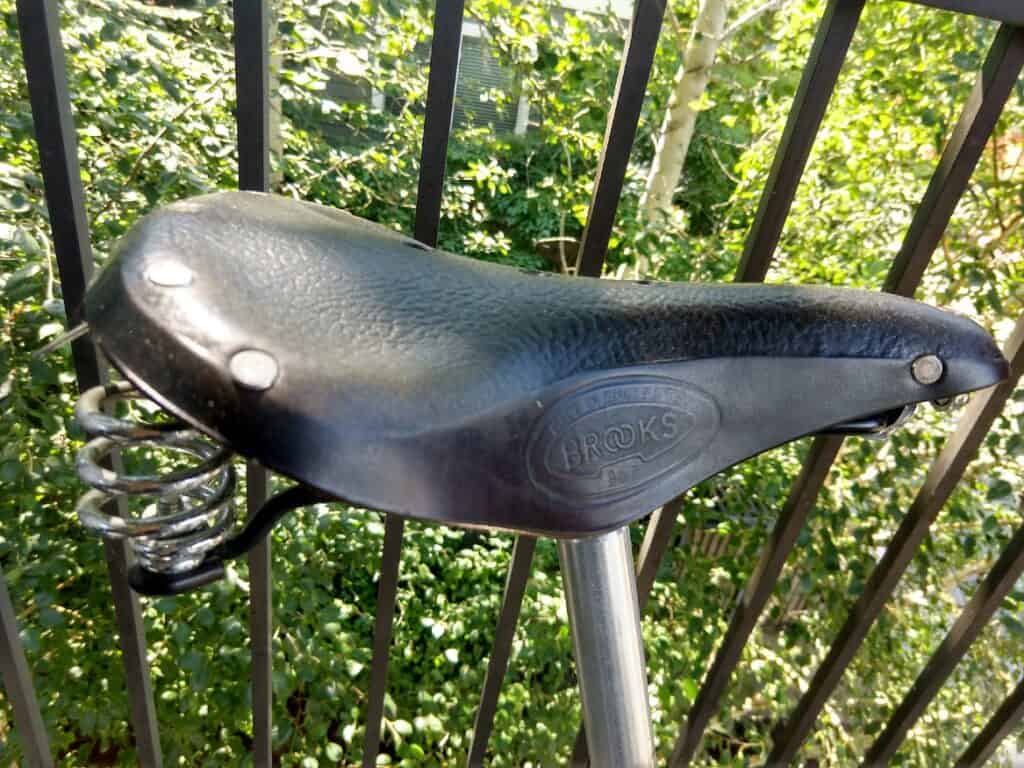
On an ideally upright city bike, you may prefer a sprung saddle to take the edge of big bumps. The best suspension is simply to stand up for a second, but sometimes you just don’t see it coming. The Brooks B67 (available on Amazon) is the definitive, almost iconic, example. It’s expensive, but plenty durable to keep for your next bike, and probably even your next generation.
Try to save by buying in autumn
Most bike shops have their biggest sales in the fall, so that’s the best time to buy a new bike. Sales usually continue throughout the winter, too, but get inventory gets picked over fast!
That’s more or less true with secondhand bikes, as well. Timing isn’t as predictable, of course, but many cyclists like to clear out their garage when prime cycling season ends.
If you commute year-round, then seasonality isn’t an issue, so you can hold out for favorable prices without missing out on riding.
There are a few other considerations and caveats around timing, so read the guide about when to buy a bike for more info that might save you money.
What’s next for new bike commuters?
Once you have chosen a bike, there are plenty of secondary questions. A few articles around this site should point you in the right direction, so, for convenience:
So, what’s the best commuter bicycle? There’s no single answer, but traditionally upright city bikes are very practical, and hybrids are also great if you like a sportier ride. Your preferences and terrain play a huge role in what you’ll actually enjoy riding.
But, I get it. The market is huge, and you’re after some specific bike recommendations (from someone who actually rides them!). To that end, here are three resources to get started:
- Check out this review of the Brooklyn Franklin bike, which is a fairly traditional city/commuter design. Whether you choose that model or not, it’s a great example of the kind of bike that most urban riders will like.
- If you want a sportier bike, then there are several great budget hybrids that will suit your commutes and weekend riders equally well.
- Finally, here are some interesting belt-drive bikes for lower maintenance, as well as fully-equipped city bikes if you’re ready to go all out.
How should I carry things to work on my bike? Panniers are ideal because they remove weight from your back, and have almost no effect on how your bike handles. Backpacks and bike baskets can also work, but in my experience, they’re poor standalone choices for long or frequent commutes. I’ve covered all these options in this guide.
What clothes are best for bike commuting? If you ride at a modest pace, then your everyday clothes are probably fine! Cycling-specific jeans (like these picks) will be more comfortable without looking oddly “athletic” at work. The key is to ride with the same exertion as a brisk walk. That helps you avoid working up a big sweat, and therefore avoid the need to shower (which eats up time and requires extra packing).
But what about when it rains? If the rain and wind aren’t very strong, then a cycling poncho and water-resistance shoes work extremely well. Generally, start with whatever you’d wear to walk in the same conditions. Visit this more thorough rainwear guide for details, or jump to these rain jacket suggestions if you’d rather go that route. (But note that fenders are the most important rain protection of all, since ground-water is filthy!)
What bike-commuting mistakes should I look out for? A common (and understandable) mistake is either going all-in on equipment before you know bike commuting is for you, or—conversely—skimping on essentials that would’ve made life far easier. It’s also important to avoid treating a commute like a race, since that reduces enjoyment (for most of us) and causes its own hassles. Check out this article for some other things to avoid.
How do I stay safe bike commuting? If you’re fortunate enough to have terrific bike infrastructure (which is a major reason the Dutch cycle so much!) then simply following the rules may be enough. But the rest of us have to cope with shoddy or absent infrastructure, which may require an extremely defensive and downright paranoid approach to safety.
A simple bicycle may have more nuance that you expected.
And since most shops (and shop employees) focus on performance-oriented riding, it’s not always easy to find good advice on the non-glamorous but eminently practical side of cycling.
It can feel a bit like going to a Ferrari dealership for a minivan!
If you have the good fortune of living near a transportation-focused bike shop, then take advantage of their expertise and support a much-needed business while you’re at it! Clever Cycles in Portland and Urkai outside (no affiliation with either) are great examples. Their websites alone may help you understand what to look for.
But everyday cycling really isn’t rocket science, even if I’ve written enough to suggest otherwise.
It seems complex only to the extent that North American bike manufacturers generally leave customers to do the same thinking and planning that most Euro city bike designers take care of for us.
On the bright side, the more cycling becomes part of your daily life, the more fun it is to wade into the details.
